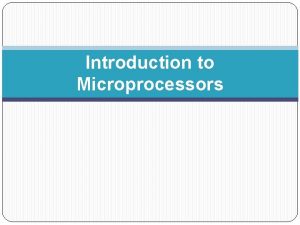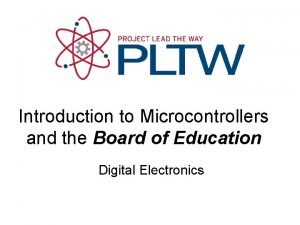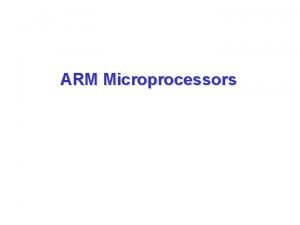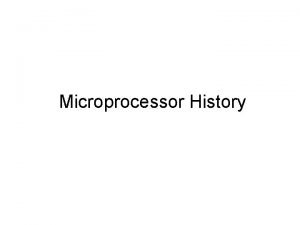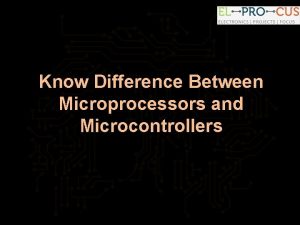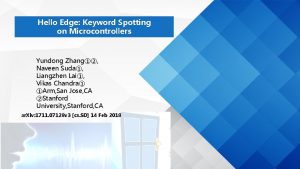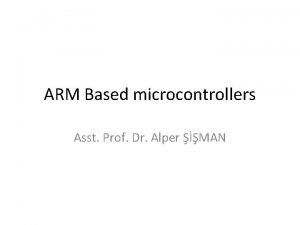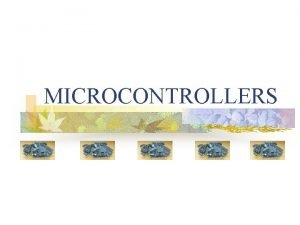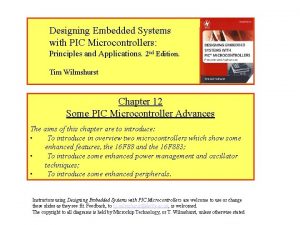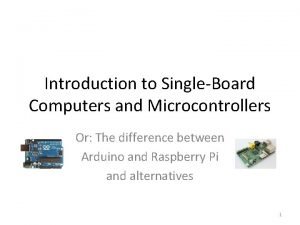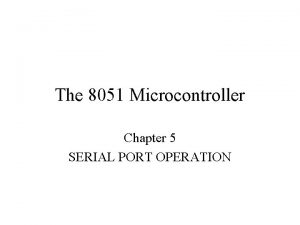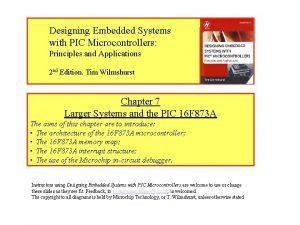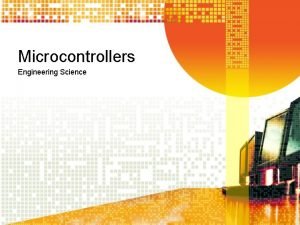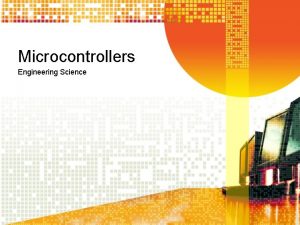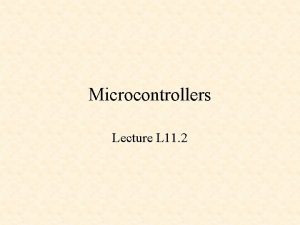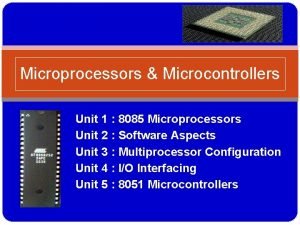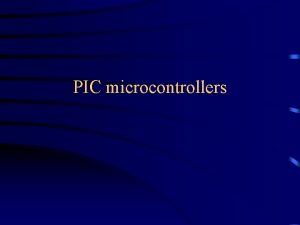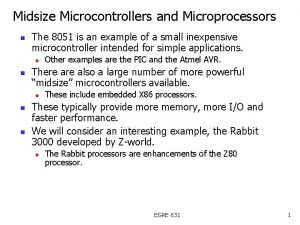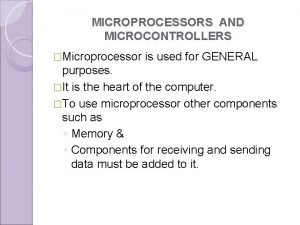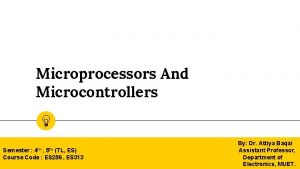MICROPROCESSORS MICROCONTROLLERS INTRODUCTION MICROCOMPUTER Microcomputer The term microcomputer












- Slides: 12

MICROPROCESSORS & MICROCONTROLLERS

INTRODUCTION

MICROCOMPUTER • Microcomputer: The term microcomputer is generally synonymous with personal computer, or a computer that depends on a microprocessor. • Microcomputers are designed to be used by individuals, whether in the form of PCs, workstations or notebook computers. • A microcomputer contains a CPU on a microchip (the microprocessor), a memory system (typically ROM and RAM), a bus system and I/O ports, typically housed in a motherboard.

MICROPROCESSOR • At the heart of all personal computers and most working stations sits a microprocessor. • Microprocessors also control the logic of almost all digital devices, from clock radios to fuel-injection systems for automobiles. • Three basic characteristics differentiate microprocessors: • Instruction set: The set of instructions that the microprocessor can execute. • Bus width : The number of bits processed in a single instruction.

MICROPROCESSOR • Clock speed : Given in megahertz (MHz), the clock speed determines how many instructions per second the processor can execute. • In both cases, the higher the value, the more powerful the CPU. • For example, a 32 bit microprocessor that runs at 50 MHz is more powerful than a 16 -bit microprocessor that runs at 50 MHz. • In addition to bus width and clock speed, microprocessors are classified as being either RISC (reduced instruction set computer) or CISC (complex instruction set computer).

What is a Microprocessor? • The key element of all computers, providing the mathematical and decision making ability. • Micro = Very Small • Processor = A system which can do processes. • They operate at ultra-fast speeds – doing over a billion operations every second. • Made up from a semiconductor, Silicon.

Microprocessor Evolution 1. 2. 3. 4. 5. 6. 7. 8. 9. 4004 8008 8080 8085 8086 8088 80186 80286 80386 10. 80486 11. 80586 – Pentium 1 12. Pentium 2 13. Pentium 3 14. Pentium 4 15. i 3 16. i 5 17. i 7

Buses in Microprocessor • DATA BUS • ADDRESS BUS • CONTROL BUS

Current Syllabus Module I • Software architecture of the 8086/8088 microprocessors – Address space – Data organization – Registers – Memory segmentation and addressing – Stack – I/O space • Assembly language programming and program development.

Syllabus Module II • 8086/88 microprocessor architecture – min/max mode – Coprocessor and Multiprocessor configuration – Hardware organization of address space – Control signal – I/O interfaces • Memory devices, circuits and sub system design – Various types of memories – Wait state – System memory circuitry.

Syllabus Module III • I/O interfacing circuits – Hand shaking – Serial and Parallel interfacing – Address decoding • Interfacing chips – Programmable peripheral interfacing (8255) – Programmable communication interface(8251) – Programmable timer(8253) – DMA controller(8237/8257) – Programmable interrupt controller(8259) – Keyboard display interface(8279)

Syllabus Module IV • Intel 8051 microcontroller – CPU operation – Memory space – Software overview – Peripheral overview • • Interrupt Timers Parallel port inputs and outputs Serial port – low power special modes of operation Noise • Introduction to ARM processors – Features of ARM 7 and 9 processors
 Micro
Micro Introduction to microcontrollers
Introduction to microcontrollers Arm microprocessors
Arm microprocessors Early microprocessors
Early microprocessors Difference between i c $ microprocessors
Difference between i c $ microprocessors Yundong zhang
Yundong zhang Arm based microcontrollers
Arm based microcontrollers What is a microcontrollers
What is a microcontrollers Microcontrollers and embedded processors
Microcontrollers and embedded processors Designing embedded systems with pic microcontrollers
Designing embedded systems with pic microcontrollers Single-board microcontrollers
Single-board microcontrollers Serial port operation in 8051 microcontroller
Serial port operation in 8051 microcontroller Data memory
Data memory
